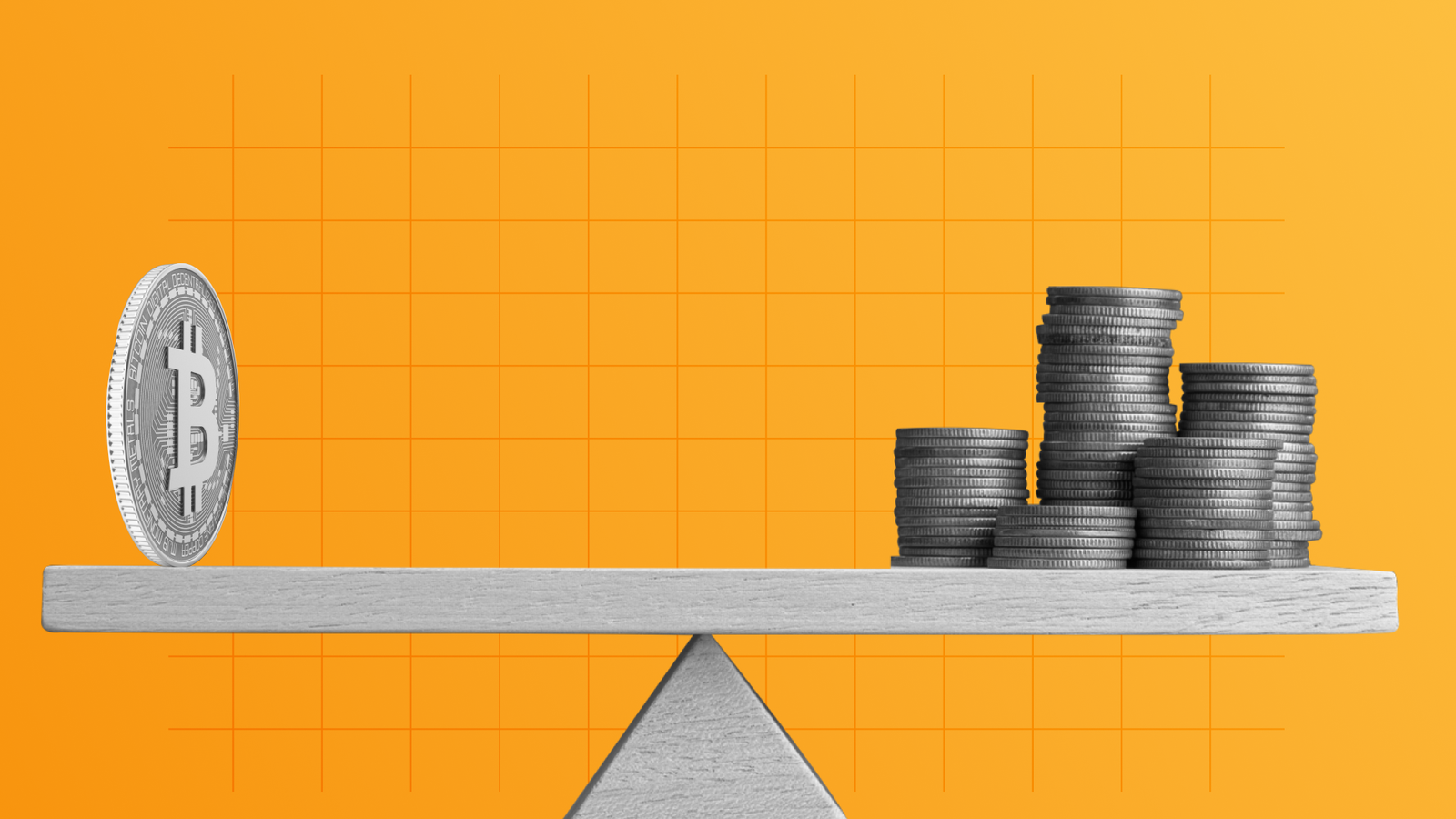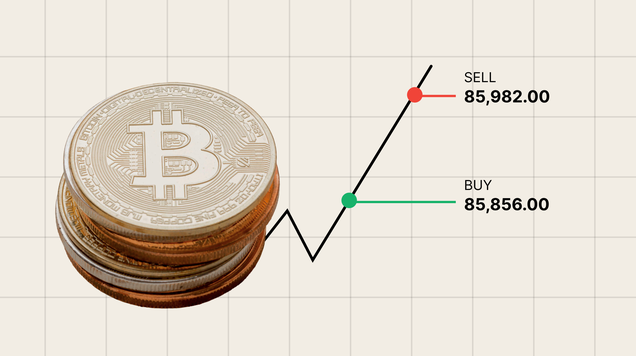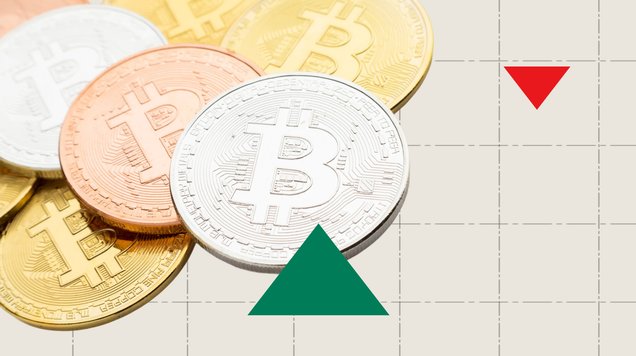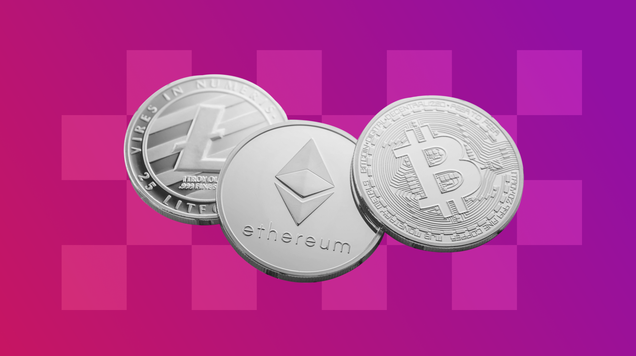How to trade Crypto with leverage
Leverage trading in crypto can amplify both your gains and losses, offering a way to maximise exposure to market movements.

Leverage provides an opportunity to trade big even with smaller capital, making it accessible to all
Stay informed with technical and sentiment analysis to make smarter, data-driven decisions while trading with leverage
You can use leverage to go long or short, providing flexibility in any market condition
Leverage trading: What it means
Leverage trading lets you control more than what you actually invest. For example, with just $100, you could trade $1,000 worth of Bitcoin.
Essentially, leverage is like borrowing extra funds to trade larger amounts than your account balance would allow. The level of leverage is shown as a ratio – like 5x, 10x, or even 100x – which tells you how much bigger your position is compared to your initial investment.
Example of leverage trading:
- You have $100
- With 10x leverage, you can control a position of $1,000 in crypto
- A 10% price increase could double your money but watch out – a 10% drop could wipe it all out too
Advantages of leverage trading crypto
1- Amplify Gains
Leverage allows traders to magnify their potential profits as even small price changes can lead to larger returns. This can be useful for capitalising on short-term market movements.
2- Trade larger positions with less capital
Leverage enables you to trade larger positions without needing a large initial investment. This allows traders with smaller capital to access greater exposure to the market.
3- Hedge existing positions
Leverage can be used strategically to hedge against market downturns, helping to manage risk by balancing positions within your portfolio.
Step-by-step guide to leverage trading crypto
In this guide, we'll explain the essential steps of leverage trading, from understanding the basics to executing and monitoring your trades.
Step 1: Understand margin and liquidation
Before you begin trading with leverage, it’s crucial to understand two key concepts: margin and liquidation.
- Margin: This is the initial deposit you put down to secure your leveraged trade. Think of it as collateral for the position you're opening.
- Liquidation: If the market moves against your trade beyond the value of your margin, the exchange or broker will automatically close your position to prevent further losses. This is done to protect you from owing more than you’ve invested.
Pro tip: To reduce the risk of liquidation, use stop-loss orders. These automatically close your trade when the market moves against you by a certain amount, helping you to minimise losses.
Step 2: Choose your leverage
Selecting the right level of leverage is key to managing risk and maximising potential gains.
Start small: If you're new to leverage trading, it’s recommended to begin with lower leverage to keep your risks under control.
Example:
If you trade with $500 at 2x leverage, you control $1,000 worth of crypto. A 10% gain in the market would result in a $100 profit, but a 10% loss could wipe out your entire $500 margin.
Remember, leverage magnifies both gains and losses, so it’s important to proceed cautiously.
Step 3: Decide on long vs. short
When using leverage, you can either go long or short, depending on whether you believe the price will rise or fall.
Going long: You take a long position when you expect the price of a cryptocurrency to increase.
Going short: Conversely, you take a short position when you believe the price will decrease.
Example:
Let’s say Bitcoin is priced at $90,000, and you anticipate the price will rise. By using leverage, you can go long on Bitcoin, potentially profiting if the price increases to $100,000.
Step 4: Monitor your trades
Once your trade is live, it’s important to monitor the market regularly to stay informed and adjust your strategy accordingly. Stay updated with cryptocurrency news and any developments that may impact price movements.
Use analysis tools:
- Technical analysis: Tools like candlestick charts and moving averages help you understand price trends and make informed decisions.
- Sentiment analysis: Understand the market’s overall sentiment towards crypto, which can help predict short-term price actions.
Pro tip: Set clear targets for when you’ll exit the trade – whether it’s a profit target or a stop-loss order. This prevents you from becoming overly emotional or greedy, which can lead to poor decision-making.
Important tips for leverage trading
1- Start small
Dip your toes in before jumping headfirst. Test leverage with small amounts until you’re comfortable with how it works and how the market moves.
2- Use stop-loss and take-profit orders
Stop-loss orders help you limit losses by automatically closing your trade at a predetermined price, while take-profit orders lock in your profits once a target price is reached.
3- Stay updated
Crypto markets are open 24/7 and are often highly volatile. Stay informed about market trends, regulations and major news events that could affect the prices of cryptocurrencies.
4- Manage your emotions
Leverage trading can be fast-paced and emotional. Stay calm, stick to your strategy and avoid impulsive decisions that could lead to unnecessary risks.
Leverage trading: A story of risk and reward
Meet Jane. She began with $100, using 5x leverage to go long on Ethereum. When ETH rose by 10%, her $100 turned into $150, boosting her confidence. However, she decided to try 20x leverage on her next trade. A sudden market dip wiped out her entire margin in seconds. The lesson here: Start small, understand the risks and always trade with caution.
Ready to start leverage trading?
Leverage trading crypto offers exciting opportunities but comes with real risks. Practice on a demo account if you’re new, and always trade with caution. With the right tools, strategy and mindset, you can make the most of this powerful trading method.
The crypto market rewards the bold, but it favours the prepared. Happy trading!
While leverage amplifies gains, it also magnifies losses. Trade responsibly and never risk more than you can afford to lose.








